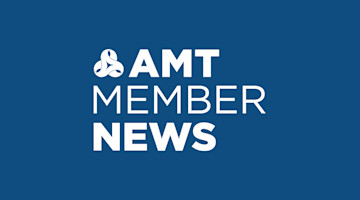Although his official titles are a bit of a mouthful, Lieutenant-General Robert Stephenson Smyth Baden-Powell, 1st Baron Baden-Powell, OM, GCMG, GCVO, KCB, DL, coined a phrase in 1907 that succinctly cuts to the heart of a point important to all of us, both personally and professionally: Be prepared.
Published in 1908, Baden-Powell’s Scouting for Boys handbook punctuated the rise of the Scout Movement, which Baden-Powell founded the previous year. While you might think Scouting is for young people, I make it part of my life.*
For instance, I travel a lot for AMT. Naturally, unexpected things can happen on the road. So, to be prepared, I carry a couple of Ziploc bags in my backpack. One includes a variety of nonperishable things to eat, like peanuts, pretzels, and energy bars. You never know when you’ll be stuck somewhere without food access. The other bag carries an assortment of medical supplies, like Benadryl, Tylenol, and Tums. If I don’t need them, great; but if I do, I’m prepared.
One of my personal pursuits is running. I recently completed the Grand Canyon Rim-to-Rim-to-Rim trail run. Not only did that require extensive physical preparation beforehand, but before setting foot in Arizona, I planned the equipment I would need and the shoes I would wear. I made sure I knew the food and water situation along the way and the location of the park ranger stations. I studied the map to note where it would be best to go forward or turn back in emergencies.
A week before the run, I learned that a key bridge I planned to cross was closed. This threw me – and my careful preparation – for a loop. I had to rethink my route – an effect that rippled out to change my timing, water supply locations, and countless other factors. I could have easily let this overwhelm me; instead, I chose to turn a “bad” situation into an opportunity.
Unexpected things are also part and parcel of business. During a hike, your well-being is at stake – but it’s only you; in business, the livelihood of dozens, hundreds, or even thousands of your staff depends on your decision-making. How you address situations that have gone awry matters.
As I’ve mentioned in past columns, I learned a lot about running a manufacturing business from my grandfather.
One such lesson was clear throughout his career: He exemplified the “be prepared” mindset.
He knew, for example, that business went through cycles, highs and lows, so he managed cash very carefully. When times were good, he would save and establish a nest egg. Then, in bad times, if doing so provided an advantage, he could spend. Say the shop down the street had to shut down. He would be ready to buy some of their equipment or hire some of their staff.
You never know when conditions will go south – only that they will. So, you want to be prepared to turn a bad situation into a good one – or at least keep things from becoming terminal.
When I ran a manufacturing company, I kept lists of actions to deploy if things went bad. I involved my management team in developing these lists, which gave me their input and prepared them to act if needed.
One of the lists tracked the company’s expenses. I knew the minimum margins we needed to hit to keep the lights on. I had to be aware of that because if orders suffered and our margins fell below that number, I would have issues with the bank.
A quick note on that: Talking with the bank on a regular basis is important – in good times and bad – so that they’re familiar with you and will be more likely to help when things go bad. The same goes for your suppliers. You want to establish good relationships with them. Yes, you are the customer, but if you’re a customer who treats suppliers as you want to be treated, they’ll more likely be on your side when you need their help.
Back to my list: By tracking my expenses, I knew which items were expendable – and in which order they could be cut – to preserve the business, even in a reduced manner.
I also kept a list of employees ranked from the best to, well, the not-quite-as-good. That way, if necessary, I could make the hard decision of who was essential to the business and who wasn’t.
When things have gone off-kilter, it isn’t easy to talk to a banker about being in arrears, to a supplier about leniency, or, especially, to good people about letting them go.
Making hard choices is always more difficult when you are on the edge, which is why preplanning is more valuable. With a plan in hand, the bad doesn’t become good, but it will certainly be better than if you hadn’t planned.
Which brings me back to Baden-Powell. He said being prepared means “having thought out beforehand any accident or situation that might occur, so that you know the right thing to do at the right moment, and are willing to do it.”
Whether that means being stuck in an airport when all the shops are closed, stranded along the trail in the Grand Canyon between facilities, or facing tariffs on parts or materials, planning and being prepared make a huge difference in the outcome.
* Admittedly, I am an Eagle Scout, but I think I’d follow that advice even if I weren’t.
To read the rest of the Sales & Marketing Issue of MT Magazine, click here.






